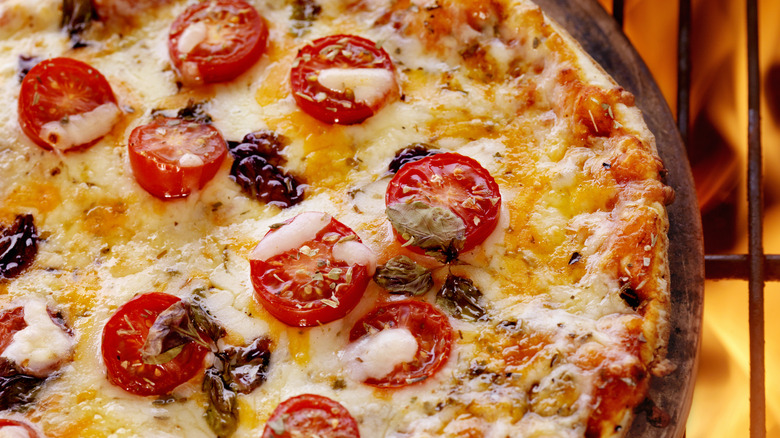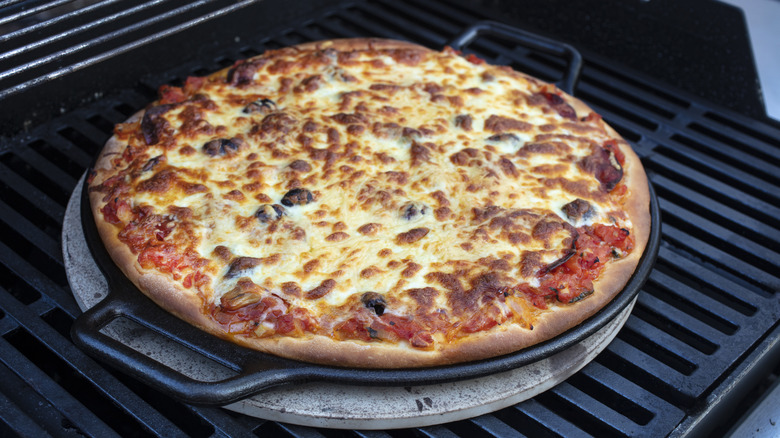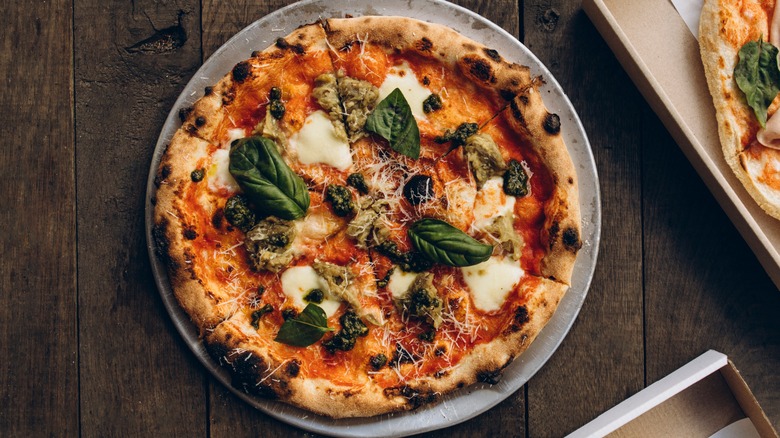The Step You Should Never Skip When Grilling A Pizza
Pizza is a versatile food that can be enjoyed all year round. Who can resist the combination of melted cheese and favorite toppings on a thin, crispy crust? The benefit of cooking pizza in the summer is that you can do it right on the grill next to your burgers and marinated chicken thighs. But, the big drawback is — if you don't do it right — you could end up with an overly blackened pizza that even the dog won't eat.
Fortunately, there is a foolproof method to ensure that your crust achieves a desirable caramelized brick oven char instead of an unappealing charcoal taste. This technique involves grilling the pizza on one side and then flipping it over before adding toppings. This step allows both sides to fully cook without either being in contact with the direct heat for too long, plus it primes the crust to perfectly melt the cheese and cook any additional toppings.
How to never burn your grilled pizza again
To avoid burnt pizza, start by choosing the right dough. The best is Neapolitan pizza dough, as it is specifically designed to bake at high temperatures. This type of dough is simple, consisting of just flour, water, yeast, and salt. However, the quality of the ingredients matters, and it is crucial to use a special Italian flour called "00." Since this dough lacks sugar or oil, it is less prone to burning.
Once your dough is ready, the cooking technique on the grill will determine the success of your pizza. Before adding your crust to the grill, oil the grates and both sides of the flattened dough to ensure that it doesn't stick. Grill until bubbles begin to appear and then carefully flip using both tongs and a long metal grilling spatula. Then, add cheese and your preferred toppings and grill until done. If the bottom of the pizza becomes too brown, move it to the indirect heat section of the grill to finish cooking the toppings.
The difference between burnt and charred
Now, you should have a beautifully baked pizza with slightly blackened bubbles, an incredibly crispy crust, and that smoky char everyone enjoys. But how can you distinguish between achieving a desirable char and burning your pizza to a crisp? With practice and plenty of taste testing, you'll learn when to remove your food from the heat to avoid crossing into burnt territory.
The difference lies in the level of flavor. Burnt food will have an overpowering bitter taste that overcomes other elements of the dish. In the case of pizza, you won't be able to savor the herbal sweetness of the tomato sauce, and the cheese will be crispy instead of moist and stretchy. The crust will crumble or turn to black dust instead of providing a satisfying crunch. While both methods result in a color beyond golden brown, it's the balance of flavors that truly matters. Experiment with different levels of char to find your preference, which may depend on the toppings you add to your grilled pizza.


